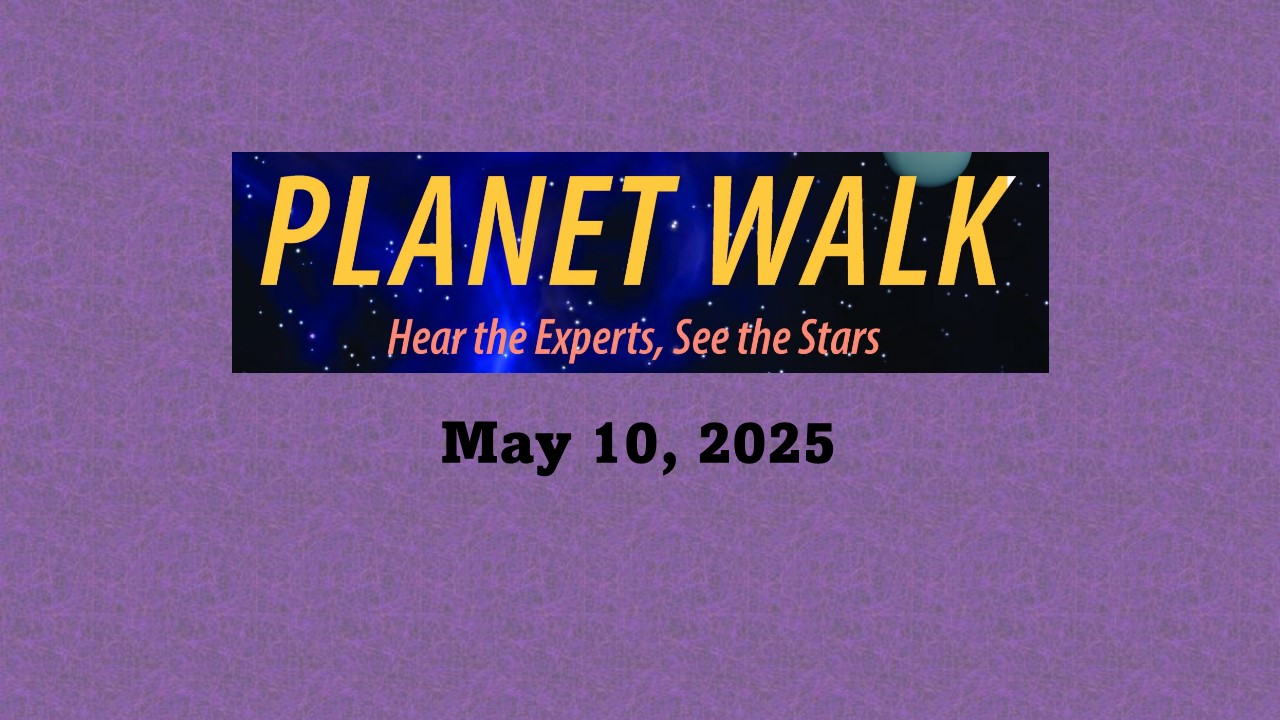On Saturday, May 10, 2025, The Friends of Anne Arundel County Trails, the Anne Arundel Community College Super Sciences Club and the University of Maryland Baltimore County have teamed up to offer a day of free public programs focused on our solar system. The events will include a Planet Walk on the B&A Trail and an illustrated evening presentation on the upcoming NASA mission to Jupiter’s moon Europa. That program will be held at Anne Arundel Community College’s Arnold campus, followed by a Stargazing Party at the campus Observatory.
The events will kick off at 10:00 AM with a Planet Walk along a 4.7 mile segment of the B&A Trail between Glen Burnie and Severna Park. This segment of the Trail features two sculptures and eight Planet Stations representing the Sun and the planets of our solar system. Each sculptural Planet Station is spaced at each planet’s proportional distance from the Sun. Between 10:00 AM and 2:30 PM, planetary scientists, engineers and astronomers from NASA Goddard Space Flight Center, area colleges and universities and local astronomy clubs will be at each of the planet stations to provide information and activities for all age groups, as well as answer questions.
Participants can walk or bicycle the 4.7 mile course between the Sun Sculpture, located just south of 800 Aquahart Road (behind Harundale Plaza) in Glen Burnie and the Pluto sculpture, located just north of the Earleigh Heights Road B&A Trail Ranger Station in Severna Park. Ample free parking is located adjacent to the Sun Sculpture in Glen Burnie. It is recommended that participants start at the Sun Sculpture. For participants seeking a shorter or less time-consuming experience, the six planets between Mercury and Saturn can be visited in the first 1 1/4 miles of the Planet Walk between Harundale Plaza and Marley Station Mall. The
Planet Walk portion of the event will be cancelled in the event of heavy rain
or thunderstorms.
Special evening events are also scheduled at Anne Arundel Community College’s Arnold campus. Beginning at 7:00 PM, the Planet Walk will feature a presentation titled “Europa Clipper: NASA’s Mission to Jupiter’s Moon Europa”. The program will take place in the Student Union Dining Hall (the Hawk’s Nest), located near Parking Lot A. Attendees may access Parking Lot A via the westernmost campus entrance off College Parkway, opposite Peninsula Farm Road in Arnold. Dr. Erwan Mazarico, a research scientist at NASA Goddard Space Flight Center, will discuss the mission’s scientific goals.
Dr. Mazarico has worked on numerous planetary and lunar missions since joining NASA in 2014. He received his Ph.D. in Planetary Sciences from the Massachusetts Institute of Technology in 2008. The focus of his NASA research has been the analysis of spacecraft tracking data of various types (radio, altimetry, imagery) in order to learn more about the geophysics of planetary bodies. Dr. Mazarico has been been leading the Gravity/Radio Science investigation of the Europa mission since 2020.
Following that presentation, there will be an opportunity for informal discussion with the speaker. Also, beginning approximately 8:30 PM, the Super Sciences Club will be hosting a Stargazing Party at the AACC Observatory. The Observatory is located at the back of Parking Lots A & B, a short walk from the Student Union. Participants will be able to utilize Observatory telescopes or they may bring their own. Club members will be able to assist with the observations. The Stargazing Party will be cancelled in the event that overcast conditions or inclement weather obscures the heavens.
The 2025 Planet Walk events will give participants a chance to gain greater insight into our solar system as well as learn about current planetary research projects. A map of the AACC Arnold campus is available at https://www.aacc.edu/media/college/maps/Arnold CampusMap17.pdf
#####
Jack Keene Friends of A A County Trails jt_keene.48@verizon.net




















